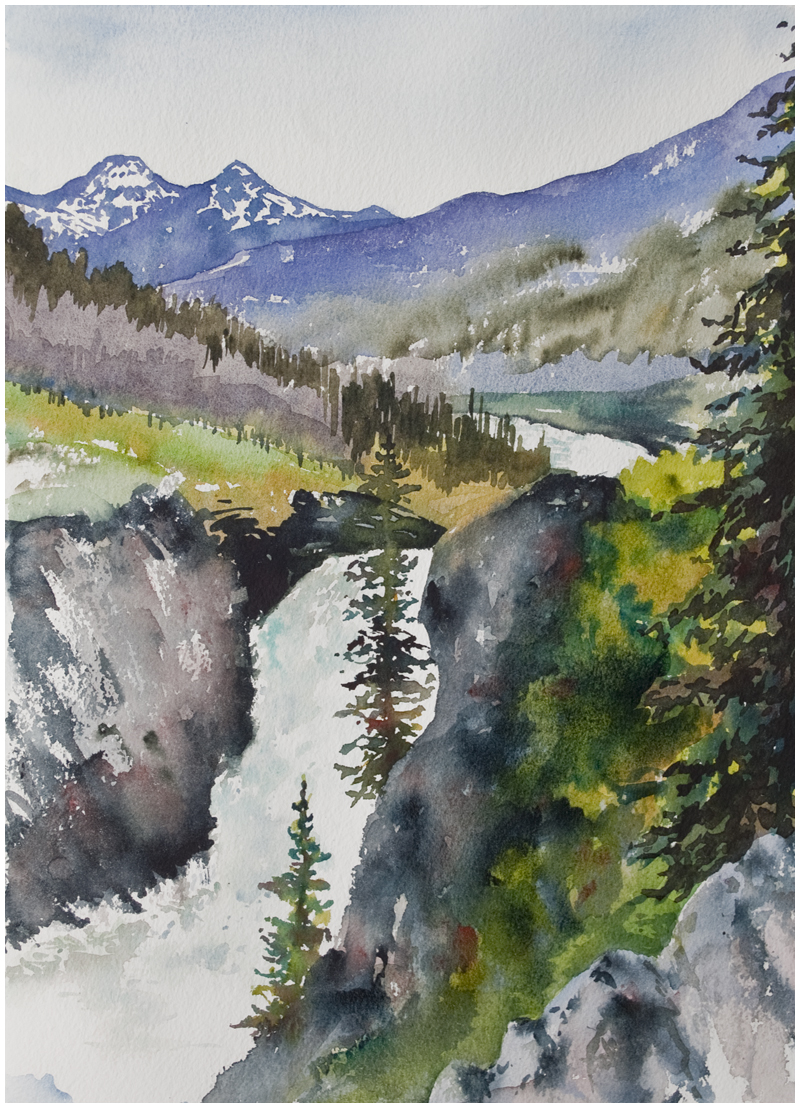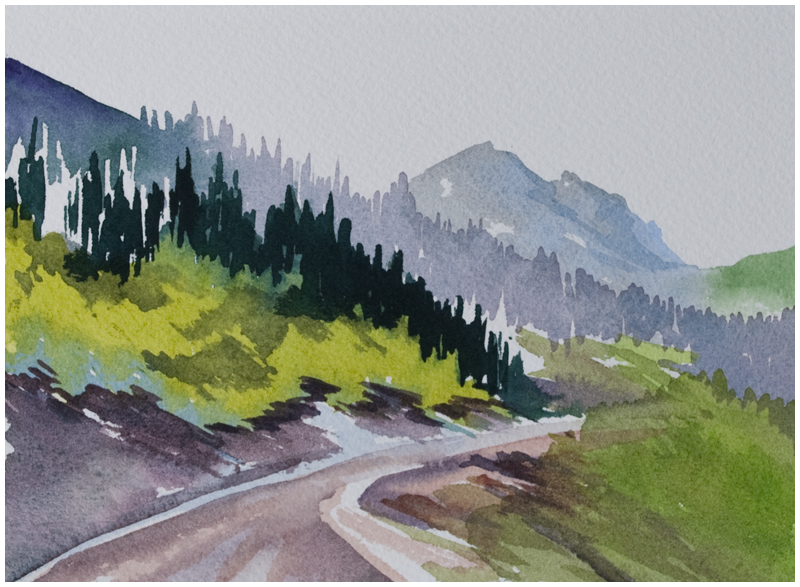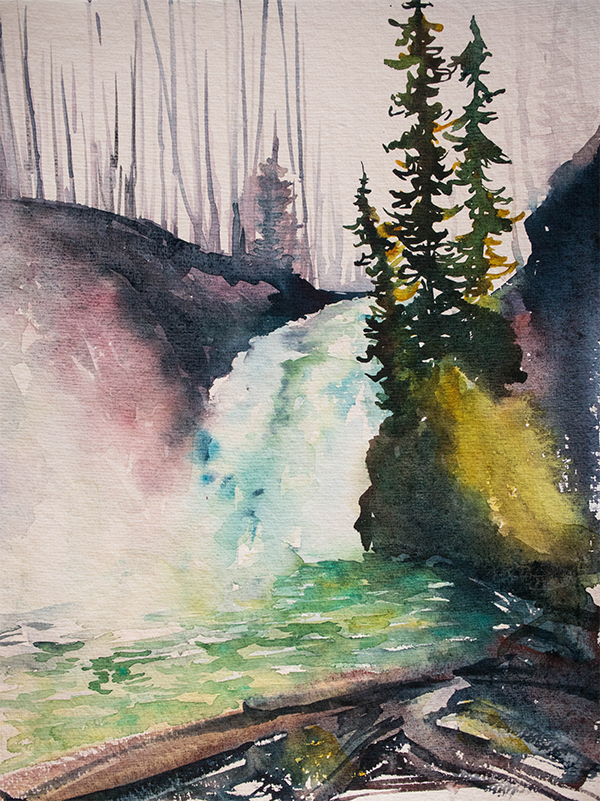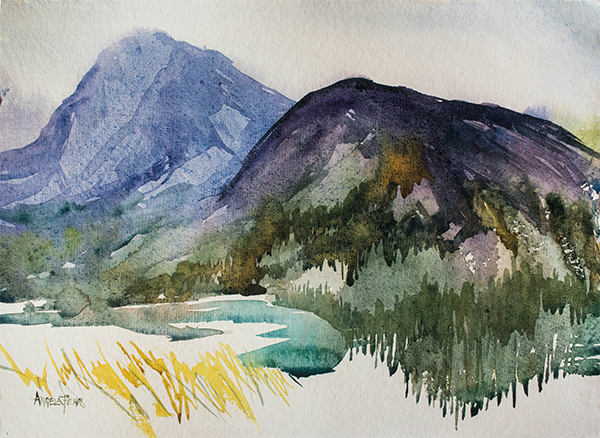Improving Watercolour Landscape Painting
Over the last couple of years I've been working on a specific area of my paintings and it's been a longer journey than I would have thought. I can trace my artistic growth through a range of stages, bookmarked by paintings that signified a breakthrough for me. From my very first "I can be an artist!" watercolour to just last week, I can pinpoint where I was at any given time in my career by what I was painting at the time. These last two years have been about landscape painting in a big way. I have said before that painting flowers feels like "coming home." It's comfortable, expressive, and almost effortless to shape petals, leaves and sunshine into a floral that is clearly an "Angela Fehr." Landscapes, however, are a lot less predictable. I have struggled with the desire to create landscapes that have a distinctive Angela style and are expressive without being exacting. It is not easy to find the balance between realism and self-expression, and I think it is this awareness of how much I have to learn that has helped me be a sympathetic watercolour teacher. We are all on the same journey!

With that said, it feels like recently I've started to find my feet in painting landscapes a little more confidently. The paintings you see today are all scenes from the same trip to Red Deer Falls in the northern Rocky Mountains southwest of Tumbler Ridge, BC. We had a wonderful offroad adventure there back in June. The first painting is a little less assured, and yet there are hints of emerging style in the shapes of the trees and the brushstrokes suggesting the rockface. The wet-in-wet background distant trees on the mountainside make me especially happy, though there are parts of this painting I would love to do over.

This is a demonstration I did in a watercolour class and, as I explained to my students, these postcard size studies are a great way to learn. In fact, the two dozen I did in spring likely contributed a great deal to my landscape education! Painting small forces you to simplify your subject, as well as freeing you to fail. It doesn't feel so bad when a small painting doesn't turn out as a big one, so you can take a few more risks. I actually did two studies of the same photo in less than an hour.

Fast forward to last week. I created two paintings from the same scene and am delighted by both. The scene above is the waterfall again, and you can see that I am learning, discarding the stuff that didn't work in previous paintings and keeping elements that did. The trees are the same shapes. The rocks are simplified and the drybrush details have been moved to the bottom of the page. Dissecting the painting isn't nearly as fun as enjoying the finished product, but I want to share how painting the same subject over and over is really a great way to learn.

This last painting is my favourite yet. The river is the same one in the waterfall, just further downstream. What I love about this painting is how effortless, how confident it appears, and yet you and I know now how much time, focus and study went into this painting. I couldn't have painted this two years ago, or even two months ago. This is what I love about painting. It keeps getting better with age and experience, becoming more me. I thought it would be easier to sell art after painting for years and creating many, many paintings, but as more of myself goes into each painting, it might just be getting more difficult. Maybe that's why the best artists price their work so highly!
Paintings shown are available for purchase. Email me to request a consultation.
